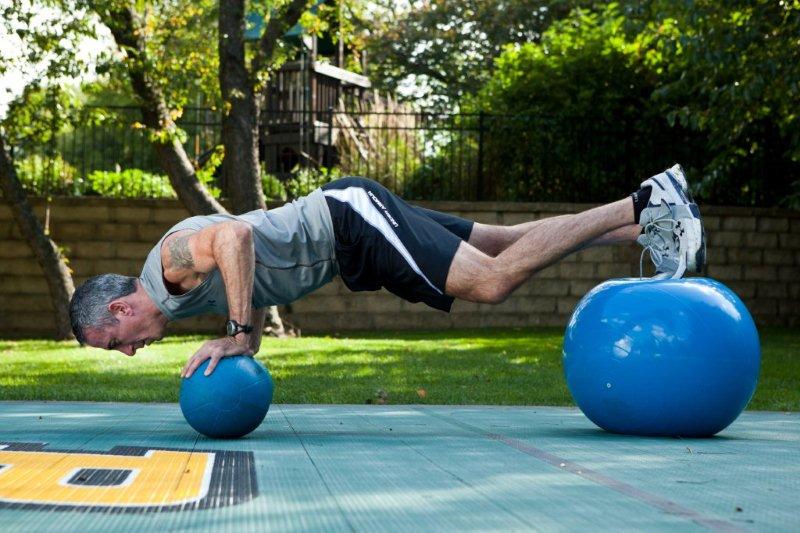 By Nicholas J. Perri MA, NASM-PES, First Place Fitness
By Nicholas J. Perri MA, NASM-PES, First Place Fitness
Since before I earned my first personal training certification in 1995, the stability ball has been an integral part of rehabilitating the human body and later became widely used in the training and conditioning of athletes and the general population alike. It was invented by an Italian plastics manufacturer in 1963 and was originally known as the Pezzi ball. It was popularized in the United States by physical therapists who integrated the ball into their treatments of adults after seeing the same techniques being used successfully at the Physical Therapy School in Basel, Switzerland by Dr. Susanne Klein-Vogelbach.
Recently, I was reminded that I had received a warning regarding the use of stability balls and performing exercises with heavy weights. I had called my distributor at the time to get further information but they were closed. I finally followed up on the warning this past weekend and found that Francisco Garcia, a professional basketball player with the Sacramento Kings at the time, had injured himself when a “burst resistant” stability ball exploded while he was doing a dumbbell chest press, causing him to break his right forearm and miss the first four months of a five year contract extension worth $29.6 million. Garcia filed a product liability lawsuit and eventually reached a settlement with the stability ball’s manufacturer for an undisclosed amount. But there have been lawsuits dating back to 2000 against the same manufacturer and a distributor that was also named in Garcia’s suit.
and performing exercises with heavy weights. I had called my distributor at the time to get further information but they were closed. I finally followed up on the warning this past weekend and found that Francisco Garcia, a professional basketball player with the Sacramento Kings at the time, had injured himself when a “burst resistant” stability ball exploded while he was doing a dumbbell chest press, causing him to break his right forearm and miss the first four months of a five year contract extension worth $29.6 million. Garcia filed a product liability lawsuit and eventually reached a settlement with the stability ball’s manufacturer for an undisclosed amount. But there have been lawsuits dating back to 2000 against the same manufacturer and a distributor that was also named in Garcia’s suit.
The stability ball is a very important tool for the fitness professional. It has many uses and offers many benefits that a bench cannot provide. However, I have always been and always will be a risk versus benefit personal trainer. While it is important to train my clients hard and diversify their workouts as much as possible, it is also important to train them smart and keep them consistently active in sport, fitness or life in general. I’m not saying to put the ball in the closet never to be seen again but keep it’s uses limited to body weight exercises done in a safe and effective manner that promote strength, balance and flexibility. I would even extend it’s utility to exercises that require light to moderate hand weights that may be used for corrective exercise training and/or strength training of the arms and shoulders for general fitness purposes.
 Here are a few more tips in selecting and safely using your stability ball:
Here are a few more tips in selecting and safely using your stability ball:
- Select a ball that is appropriate for your height. Most people select one that is far too big for them. You should be able to sit on the ball with your feet flat and your knees at 90 degrees.
- Make sure it is properly inflated.
- Use the stability ball on a clean smooth surface clear of sharp objects or debris.